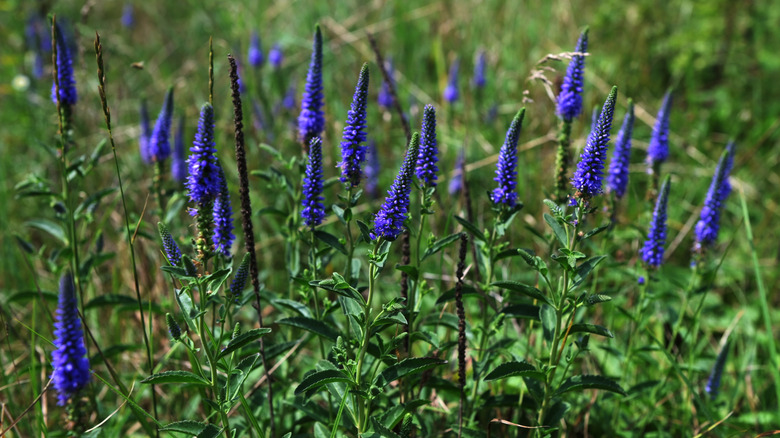Plant This Stunning Perennial This Fall — It'll Grow Back Even Better Next Year
Fall is a great time to plan ahead if you want to grow an abundant, healthy garden in the spring and summer. As cooler temperatures roll in, it's a time to rake leaves, prep your soil, and plant spring-blooming bulbs. But if you really want a showstopping garden next year, planting Veronica (Veronica spp.) should be at the very top of your fall to-do list for the garden of your dreams. Also commonly known as speedwell, this perennial adds an ethereal, romantic element to your landscaping. Planting this beauty in the fall will actually help it to establish better and look even more gorgeous next year.
There are about 250 species of Veronica flowers ranging from ground-hugging crawlers to spiking tower blooms. Be warned that some types of speedwell are invasive plants you should avoid, but others can be easily tamed. Common speedwell (Veronica officinalis), spiked speedwell (Veronica spicata), and Turkish speedwell (Veronica liwanensis) are some examples that are safe for most areas. The taller varieties tend to make for great cut flowers or a tool for cultivating vertical interest in a garden while the low-growing species make for a lovely ground cover. Bloom colors come in a diverse array of shades including purples, whites, blues, and pinks. Regardless of the specific Veronica flower you choose, planting in the fall will come with a range of benefits. Cooler temperatures offer it the chance to better establish a strong root system. This aids in reducing any undue stress on the plant. In turn, blooms are likely to come earlier and more generously during the spring and summer.
Plant Veronica varieties in fall for a burst of color in spring
Generally speaking, a majority of Veronica flowers can grow in USDA hardiness zones 3 to 11. However, some species may have a more limited zone to consider. When planting this perennial in fall, aim to plant 6 weeks before your first frost. All varieties should be planted in full sun to partial shade. Opt for well-drained soil across the board, but be sure to supplement vertical species with compost, and stick with rocky, less fertile soil for ground cover varieties. If you're planting from a nursery pot, all you need to do is drop the plant directly in a suitably sized hole, fill in with soil, and water. If you're planting loose-rooted plants, be sure to soak the roots for 1 to 2 hours first. If you wish to plant your Veronicas in groups, be sure to space the plants 12 to 18 inches apart to avoid overcrowding.
During their first year in your yard, water your flowers if you get less than an inch of rain per week. Once established, Veronicas are quite resilient. They are drought-resistant and don't require a ton of maintenance. They're not too fussy about regular feeding or pruning. Veronicas will bloom from spring through summer. You can choose to deadhead flowers in fall to prolong your blooms, but it's not necessary. The most work you'll have to do is reapplying compost to verticals in the spring and dividing clumps every few years. Just think, choosing to plant Veronicas this fall will offer you years and years of low-maintenance flowers that will thrive in the sun!

